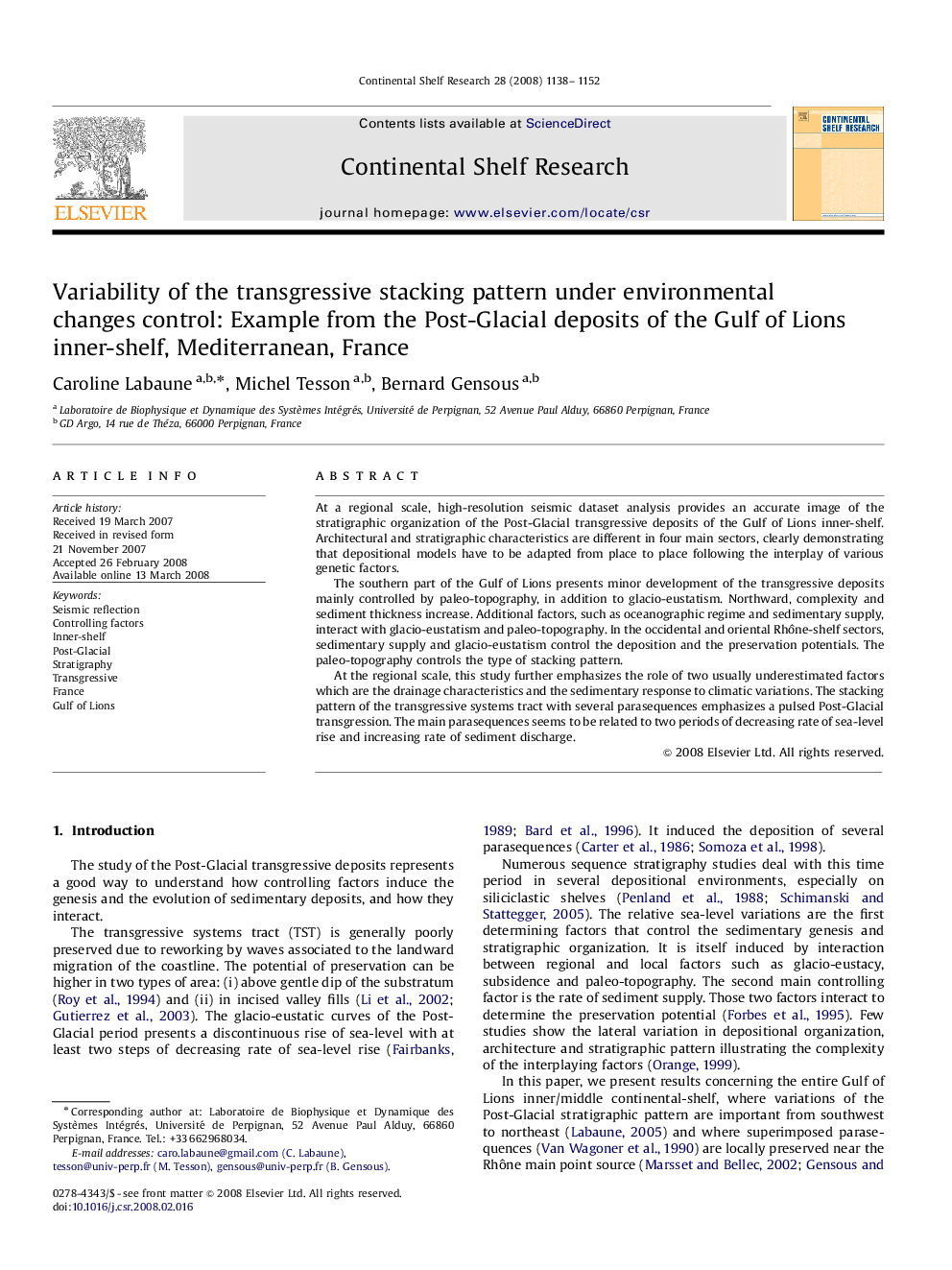| Article ID | Journal | Published Year | Pages | File Type |
|---|---|---|---|---|
| 4533627 | Continental Shelf Research | 2008 | 15 Pages |
At a regional scale, high-resolution seismic dataset analysis provides an accurate image of the stratigraphic organization of the Post-Glacial transgressive deposits of the Gulf of Lions inner-shelf. Architectural and stratigraphic characteristics are different in four main sectors, clearly demonstrating that depositional models have to be adapted from place to place following the interplay of various genetic factors.The southern part of the Gulf of Lions presents minor development of the transgressive deposits mainly controlled by paleo-topography, in addition to glacio-eustatism. Northward, complexity and sediment thickness increase. Additional factors, such as oceanographic regime and sedimentary supply, interact with glacio-eustatism and paleo-topography. In the occidental and oriental Rhône-shelf sectors, sedimentary supply and glacio-eustatism control the deposition and the preservation potentials. The paleo-topography controls the type of stacking pattern.At the regional scale, this study further emphasizes the role of two usually underestimated factors which are the drainage characteristics and the sedimentary response to climatic variations. The stacking pattern of the transgressive systems tract with several parasequences emphasizes a pulsed Post-Glacial transgression. The main parasequences seems to be related to two periods of decreasing rate of sea-level rise and increasing rate of sediment discharge.
